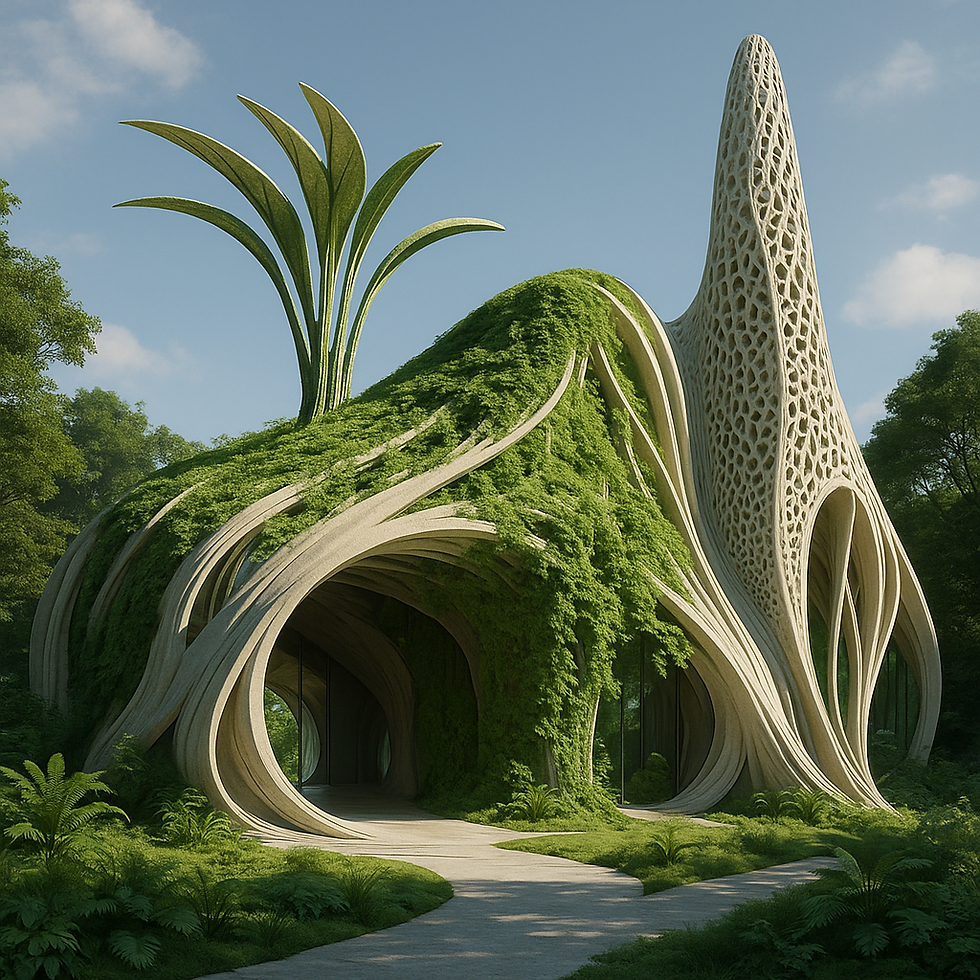Biodesign & Bionic Inspirations: The Future of Architecture
- Prateek Mishra
- Aug 28
- 2 min read
Introduction
Architecture has always drawn inspiration from nature—whether through material choices, structural logic, or spatial harmony. In recent years, this relationship has moved beyond metaphor and aesthetics into functional collaboration with biology. The rise of Biodesign and Bionic Architecture signals a new era where buildings are not just constructed but grown, adapted, and evolved, much like living organisms.

What is Biodesign?
Biodesign integrates biological systems and living materials into architectural practice. Instead of relying solely on steel, concrete, and glass, architects are now experimenting with:
Mycelium bricks – fungal networks grown into lightweight, fire-resistant building blocks.
Algae facades – panels that absorb CO₂ and produce oxygen while acting as bio-solar energy systems.
Bacterial cellulose – an organic material stronger than concrete on a weight basis, yet biodegradable.
The goal is to create self-healing, regenerative, and eco-positive structures that reduce environmental impact while offering new forms of resilience.
Bionic Inspirations in Design
Bionic architecture looks to nature’s engineering for structural and material efficiency. By mimicking biological forms and processes, architects achieve solutions that are both functional and elegant. Some examples include:
Biomimetic facades inspired by termite mounds, which naturally regulate indoor temperature and ventilation.
Lotus leaf effect coatings for self-cleaning surfaces that repel water and dust.
Spider web–inspired tensile structures that optimize strength with minimal material use.
This approach emphasizes efficiency, adaptability, and harmony with the environment, moving architecture closer to nature’s genius.
Why It Matters Now
Climate Crisis Response: With rising carbon emissions and construction waste, regenerative biodesign offers sustainable alternatives.
Urban Resilience: Cities face challenges of pollution, heat islands, and resource scarcity—living systems can help mitigate these issues.
Human Well-being: Spaces enriched with natural materials and adaptive features enhance physical comfort and emotional wellness.
Global Examples
The Algae House, Hamburg – uses microalgae-filled panels that generate renewable energy.
Hy-Fi Pavilion, MoMA PS1, New York – constructed from biodegradable mycelium bricks.
Eastgate Centre, Zimbabwe – a commercial building modeled on termite mound ventilation systems, reducing energy use drastically.
The Future Ahead
Biodesign and bionic inspirations hint at a future where:
Buildings self-heal like skin.
Walls grow to repair cracks.
Facades breathe and filter air like living lungs.
Cities function as ecosystems, producing more energy, water, and oxygen than they consume.
This vision redefines architecture not as static monuments, but as living, adaptive organisms that evolve with their inhabitants.
Conclusion
The fusion of biology and architecture is not science fiction—it is already reshaping design philosophies across the globe. By learning from and collaborating with nature, architects can create buildings that are sustainable, regenerative, and deeply connected to life itself.
Biodesign and bionic inspirations represent the next frontier: architecture that doesn’t just house life, but becomes alive





Comments